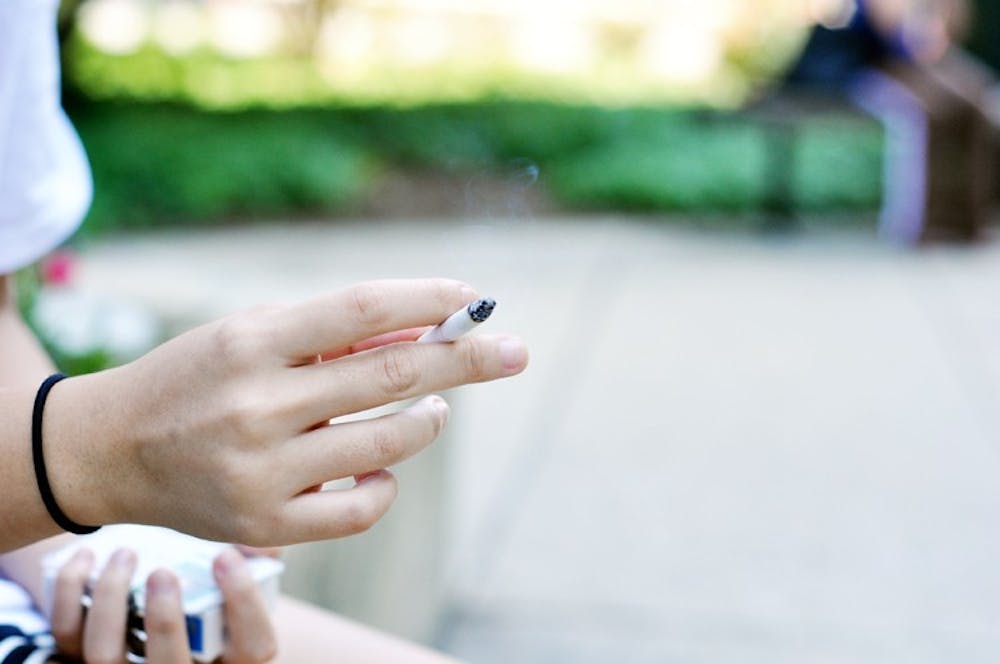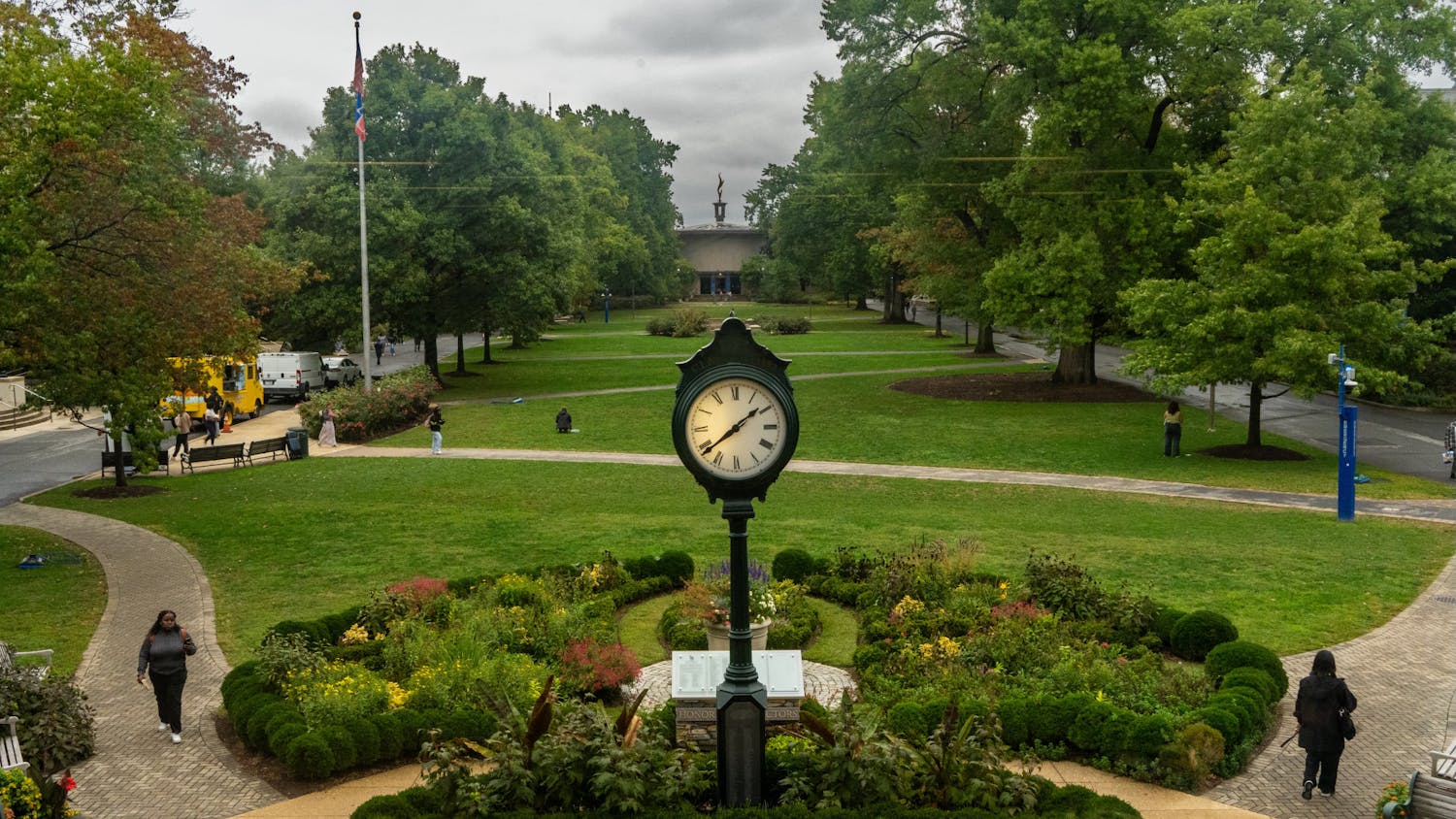Smokers might soon have to be more careful about where they light up on campus. A new revised policy could prohibit students from smoking within 25 feet of campus buildings.
The new policy, drafted by Director of Sustainability Chris O’Brien, would not only give clean air rights to non-smokers tired of breathing in secondhand smoke but is also a pre-requisite for LEED certification of campus buildings, including the School of International Service building.
Currently, smoking inside all academic buildings and work areas on campus is prohibited, but smoking on University grounds and outside buildings is permitted, according to the policy listed in the Student Handbook.
|
What students think about it: Non-smokers “I hate people smoking. It’s very disgusting to me. I give tours and I always have parents asking me how far they [smokers] have to be. It’s not just people here, but people who are coming here who are worried.” “Twenty-five feet is a good enough distance where [smoke] won’t just waft into the building.” Smokers “For the most part, I just try to be courteous. As a smoker, I don’t want to walk that far away.” br>
Alana Coleman, SPA, senior “I can understand why people wouldn't want that [the new policy]. You can smell smoke inside buildings. I'd rather not smoke in the rain though. I think it's just a matter of comfort for smokers." |
However, the new signs outside of the Mary Graydon Center asking students to not smoke within 25 feet of the building conflict with this policy.
O’Brien has been drafting a new policy over the last year that institutes an official Student Handbook policy to enforce these signs. Other administrators are currently reading the policy, but O’Brien does not know if or when it would take effect.
The new signs, added Oct. 6 by the Office of Campus Life, supplement existing signs on MGC’s doors, which read “Smoke Free Area.” The new stand-alone signs can be seen outside the main doors of MGC, as well as by the side entrance closest to the Tavern.
Director of University Center Operations Scott Jones believes the signs are already making smokers outside of MGC more conscious of their location.
“With the new signs, as we approach folks, there’s a much more respectful response,” Jones said. “We’ve seen less [smoking] overall.”
The proposed smoking policy has not come to the president’s cabinet yet, making it difficult to project a timeline for its formal consideration.
The effective date is up to President Neil Kerwin, Hanson said.
Reasons for New Policy
O’Brien’s new policy reflects AU’s awareness that secondhand smoke is a form of air pollution, he said. It is meant to address vagueness and confusion surrounding AU’s current smoking policy.
There are currently no LEED certified buildings on AU’s campus, but the new School of International Building is registered with the U.S. Green Building Council and is being considered for LEED Gold certification, according to O’Brien.
Even if a campus-wide policy is not in place, the SIS building would need to have a 25-foot smoke-free perimeter to be certified, according to O’Brien.
A push from students is also responsible for the possible change in policy.
Noah Jacobs, a graduate student in the School of Communication, produced a film about AU’s smoking policy and the issues surrounding the policy.
“The University is so progressive, but this is a fundamental right,” Jacobs said. “Smoke lingers. It’s not something you can choose not to breath.”
Jacobs’ 15-minute documentary tries to clarify exactly what the current smoking policy means and how it applies to building entrance ways. His film is currently featured on SmokeFree D.C.’s website.
“I don’t think smokers should be making the decision on what I breathe as I walk into academic buildings,” said Jacobs, who is a former smoker. “I don’t want to be perceived as someone who hates smokers ... The issue is smokers aren’t aware if they are in violation of the policy.”
Enforcement
The 25-foot boundary described by the new signs outside of MGC are part of a “courtesy zone,” according to Gail Hanson, vice president of Campus Life.
There is no actual enforcement of this zone by the University, and AU still relies on “community enforcement,” Hanson said.
She defined community enforcement as a “community member to community member” system that relies on students and staff to ask others to be more considerate.
“It’s a civility thing,” Hanson said. “It’s not a rule. People won’t be punished but will be considerate.”
However, Hanson is only responsible for managing stand-alone buildings where Campus Life departments are the only or principal occupants. This includes MGC, the Kay Spiritual Life Center, the residence halls and McCabe Hall.
The vice president of Finance and Treasurer is responsible for all other University buildings, including the SIS building.
Public Safety does not have the resources to enforce a smoking policy, according to Public Safety Chief Michael McNair.
“You should use the least amount of force required,” McNair said. “Public Safety shouldn’t be the first resort.”
But Jacobs thinks concrete processes of enforcement are necessary. Just the threat of a ticket would decrease the number of smokers in entranceways and would require minimal University effort, Jacobs said.
Modes of enforcement for the possible new policy are still in discussion. O’Brien believes any type of enforcement would follow the same procedures as currently outlined for any type of misconduct in student handbook.
Public Safety will respond to violations of the policy if called by faculty and staff. So far this year, Public Safety has responded to seven to eight smoking violations, according to McNair.
All of these cases involved a person smoking inside a building who refused to stop when asked by a faculty or staff member but when confronted by Public Safety was compliant, McNair said.
McNair feels that smoking on campus isn’t nearly as big a hazard as it has recently been publicized. He feels Jacobs’ video was exaggerated for effect.
“I walk campus a fair amount, and I don’t see 25 people in one place light up at once,” McNair said. “I usually see one or two. Not sure that constitutes any hazard.”
A new policy and/or any type of enforcement of this policy will be met by a lot of resistance from students, McNair said.
“It’s an issue that’s going to plague us for years to come,” McNair said. “There’s no silver bullet.”
ascalamogna@theeagleonline.com





